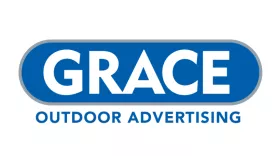Landmarks and Landscapes | Wales Garden
Palladium Tour | Landmarks and Landscapes
We're excited to see you on Sunday, April 7, 2024, for Landmarks & Landscapes!
Please be advised that this is a rain or shine event and some area streets will be closed to vehicular traffic.
This website has all the information you need to make the most of your time on the tour. Use the Quick Link buttons below to easily navigate the page.
Getting There
There is ample street parking in Wales Garden and surrounding areas. Additional off-street parking has been made available at 219 Pickens Street, thanks to The Exum Company; the building's full lot is available on a first come, first served basis.
Please obey all posted signage and do not block any driveways.
Basic Tour Information
After Party
Palladium Tour attendees are invited to join us outside at 1819 Seneca Avenue for a private post-tour reception. There will be a TV outside for those wishing to watch the women's basketball championship game.
The Palladium Tour reception will last from 4:00 - 6:00 p.m. Attendees should enter the backyard from the left side of the property via the driveway. Tour wristbands will be required for entry into the backyard and to get alcoholic beverages. Come enjoy complimentary food and beverages, games, music, and more!
Tour Stops
Use the buttons below to learn more about each tour stop. Homes may be viewed in any order. But first, a few Do's and Don'ts.
Do's
Do wear booties when inside the homes and take the booties with you from house to house.
Do follow all posted signage guidelines and directions given by HC staff and volunteers.
Do respect the areas of the home that are designated off limits and don't open closed doors.
Do refer to this website for "before" images and background information on the homes.
Don'ts
Don't eat or drink inside the homes.
Don't bring your pet onto the properties, and please don't smoke on the properties.
Don't use the toilets at any of the homes; there are portable facilities available at the corner of Saluda Avenue and Catawba Street.
Don't be a bad neighbor! Please do not litter.
Want to follow the homes in this order? Consider using this Google Map with walking directions!
a. 1917 Seneca Ave. b. 101 Saluda Ave. c. 121 Saluda Ave. d. 1717 Enoree Ave. e. 203 Wateree Ave. About Wales Garden
1917 Seneca Avenue
One of a handful of Columbia landmarks in Wales Garden, 1917 Seneca Avenue commands a prominent location within the heart of Edwin Wales Robertson’s early twentieth-century upscale suburb. Designed in the Neoclassical style by architect James Brite of the New York firm of Bacon & Brite, who also planned Columbia’s first skyscraper (today’s Barringer Building), this residence was born out of love, delayed by war, and made into a home by two of the capital city’s influential families.
101 Saluda Avenue
Dynamic in form and nuanced in detail, 101 Saluda Avenue traces its roots to an era of modernization in which the capital city experienced a building boom following World War II. When completed in 1951, the early Cold War-era residence—“built on spec” by Craig-Register, a company incorporated by lumber executive Robert E. Register, Jr. and real estate developer J. Wallace Craig—featured a notably different appearance than the one seen today.
121 Saluda Avenue
Built for real estate developer Thomas E. Hair and his family between 1938 and 1942 from a design by Robert Eisenschmidt, this Colonial Revival residence is indicative of the type of home envisioned by the Columbia Development Corporation, which laid out Wales Garden over two decades prior. From its bold and multi-faceted entrance, defined largely by a delicate tracery of its fanlight and sidelights, to its symmetrically placed six-over-six windows and bold dentil work and brackets, the Hair residence exuded the tenets of the 18th- and early 19th-century Georgian and Federal periods.
1717 Enoree Avenue
Built in 1923 for Eugene H. Marley, this residence is one of at least three homes in Wales Garden designed by Leila Ross Wilburn, a female architect from Atlanta, Georgia. Its deep, gabled front porch offers sheltered access to the house’s impressive front entrance—a nine-lite, Prairie style front door flanked by slender six-paned sidelights and crowned by a transom flanked by four-paned corner windows. While 1717 Enoree Avenue typifies the highly popular bungalow form of early twentieth-century residential architecture, the manner in which form and function elevate one another is a hallmark of Wilburn’s designs.
203 Wateree Avenue
Designed by and completed for Arthur W. Hamby in 1917, this residence is a quintessential example of a Colonial Revival home built during the World War I era. Although Hamby’s family only lived at 203 Wateree Avenue for just over a year, his architect’s eye remains evident in the oversized, south-facing fanlight window, exterior tapestry brick work with charcoal mortar, and the front stoop’s clean, open pediment atop Doric columns.
Wales Garden
In 1912, the City Development Company (CDC) purchased 80 acres of the former Stark Plantation to develop into an exclusive neighborhood. The CDC consisted of eight original members, one of which, Edwin Wales Robertson, Wales Garden was named for. Robertson was also the president of the Columbia Electric Railway, Light, and Power Company and was thus able to ensure that the street railway system ran into Wales Garden; The streetcar operated on Saluda Avenue from 1915-1936. Early planning of the neighborhood also included ensuring the area included modern infrastructure such as access to City water and sewer as well as paved streets.
The CDC’s original layout of Wales Garden included 912 twenty foot wide parcels, the first of which was sold in December 1915. Early investors were permitted to purchase as many lots as they wished to create the lot size they desired, which is still evident today in the vastly different sized lots seen throughout the neighborhood. In the effort to establish exclusivity of the neighborhood, covenants were attached to the deeds for the early Wales Garden lots. These restrictions included prohibitions against apartments, hotels, stores and business being built in the neighborhood without permission. Other restrictions included no one-story houses, no house costing less than $7,500, no front yard fences, no retaining walls, and no billboards. Of course overtime most of these early restrictions were relaxed or eliminated, such as allowing for onestory houses, but evidence of the early restrictions can be seen in the larger houses along the earliest developed streets between Saluda, Wateree, and Edisto.
Neighborhood bio courtesy of the City of Columbia Preservation Newsletter, July 2018.
Thanks to our Sponsors!
- 1x1 Design
- The Art of Dentistry
- Chernoff Newman
-
Samra Childers
- The Eddy Law Firm, LLC
-
The Exum Company
- Geneva Financial Home Loans
- The Gourmet Shop
- Grimball Cotterill Landscape Architects
- Devin Ihme - Lakeside Team at Real Broker, LLC
- McGriff Insurance Services
- Republic National Distributing Company














